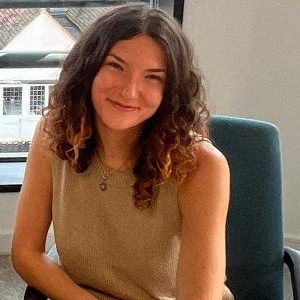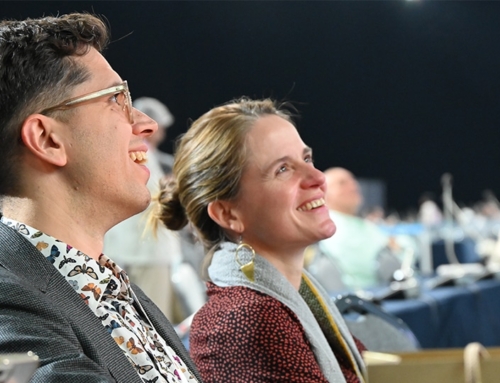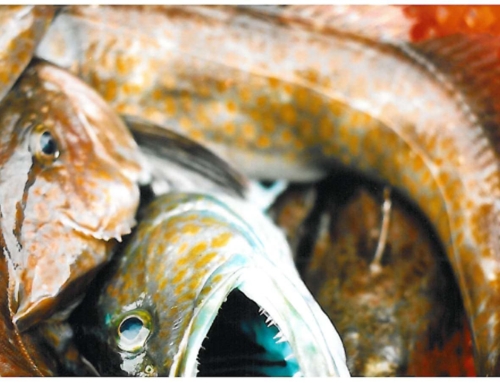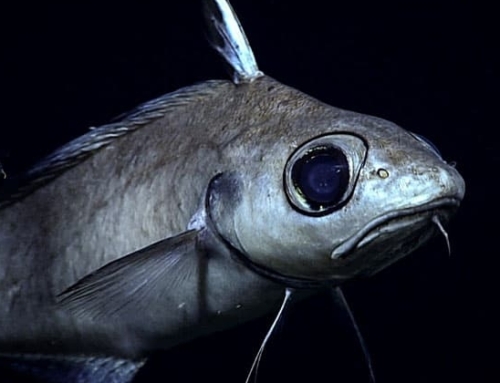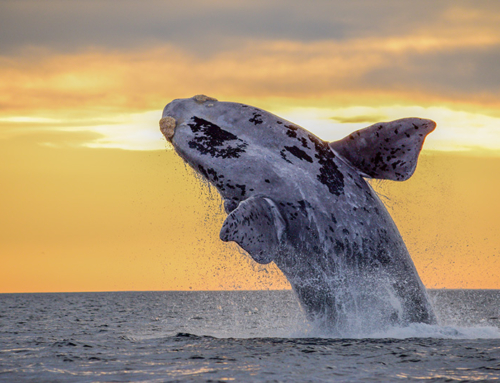In late Spring, a handful of Synchronicity Earth team members visited our partner Project Seagrass in West Wales to see their incredible work preserving lesser-known, though vital, seagrass habitats.
These remarkable underwater ecosystems face global threats: since the late 19th century, around a fifth of the world’s seagrass meadows have disappeared. In the UK, we’ve lost up to 92% of our seagrass.
A restorative dip
We drove over to Dale Bay, ready for an early start to explore the coast. We're told seagrass meadows covered the entire bay 100 years ago, though the plants have since dwindled into sparsity and had all but disappeared.
But, after years of experimentation, in 2020 Project Seagrass, Swansea University, WWF-UK and Pembrokeshire SAC completed a pilot project here. Planting over a million seeds across two hectares, this was the UK's first major seagrass restoration project.
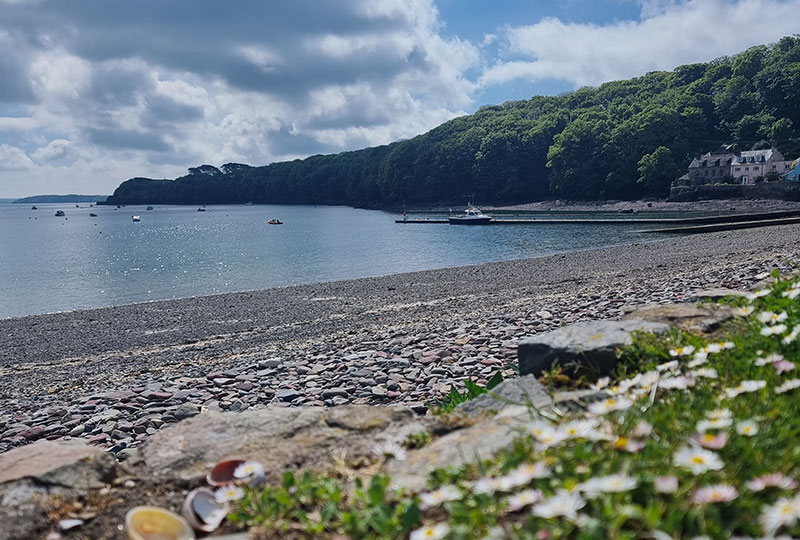
The restoration of Dale Bay was a community effort. Dale Seagrass Stakeholder Group was created to find solutions, like devising safe, alternative mooring buoys for visitors.
Greeted by a beautiful morning to catch the low tide, we donned our wetsuits – armed with a snorkel, mask and weights to help dive down – and made our way into the fresh May water. At first, there wasn't much to see, but we soon received the signal and with some hasty flicks of our flippers, we'd reached the site. Beneath the calm surface, a humble expanse of lush, green ribbons sways in waves. Amongst them, huge crabs and a swift dogfish.
Like many things in conservation, progress can be slow. It's still early days for this seagrass meadow: they can take five to seven years to establish and the team have regularly monitored the area to assess and 'top-up' the meadow with extra seeds. Nevertheless, it's one step closer to a healthier coastline for people and nature.
"Snorkelling in seagrass is one of my favourite things. It's the most calming, peaceful environment ever. It's therapy. It's aesthetic. You see so many things. But if you're listening, you can hear all this popping and crackling – you can hear the photosynthesis. It's just wonderful."
– Benjamin (Ben) Jones, Chief Conservation Officer & Co-Founder
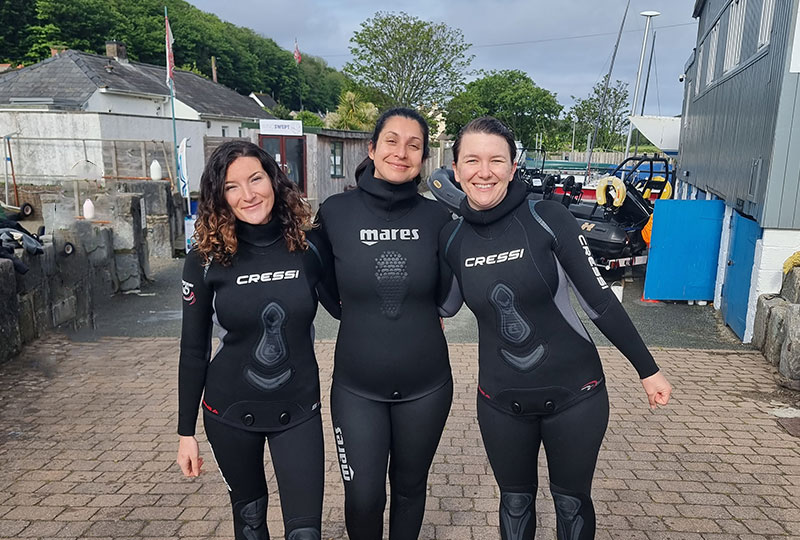
Synchronicity Earth team members Geanie, Sabrina, and Anna (left to right) get ready for an underwater glimpse of seagrass.
What is seagrass?
Most people are familiar with the urgent need to protect our rainforests, coral reefs, and oceans, but seagrass meadows tend to fall under the radar.
Seagrasses are flowering plants that create dense underwater meadows, typically in shallow, sheltered coastal regions. Unlike seaweeds, they possess leaves, roots, shoots, and even flowers. These underwater landscapes can teem with life and provide habitat for a multitude of animals.

Seagrass is the only flowering plant that can live in seawater. There are around 70 species of seagrass worldwide, in diverse shapes, colours, and sizes.
'This one wonder thing': The benefits of seagrass
People have found various uses for seagrass over the years: seagrass made up the insulation lining for the world’s first commercial refrigerator and was even used to insulate the huts of Captain Scott on the fateful Terra Nova expedition across Antarctica. But as seagrass declines, we are at risk of losing the vast benefits it provides for planet and people.
“I wish more people knew how incredibly important seagrass is – all of the different and quirky benefits it provides. One of these is biodiversity support, but I’m particularly interested in the role that they have for providing food security and livelihoods through fisheries, helping to alleviate poverty across the world.”
– Ben Jones
- Relied on by thousands of marine species, 30 times more animals live amongst seagrass compared to sandy habitats.
- Creates the healthy fishing grounds that almost 3 billion people depend on for food.
- Roots reduce coastal erosion and offer protection to coastal communities from storms.
- The cultural significance of seagrass is felt by an array of communities, like in the Solomon Islands, where fishers twist seagrass leaves together and call to seagrass spirits for good luck.
- Though it covers less than 0.2% of the ocean floor, seagrass stores 10% of annual ocean carbon.
“When people first come to us, they tend to be thinking about carbon storage. But there’s so much more to it: it stabilises sediment, provides habitat for young fish species that we eat, like cod and plaice, it cleans the water, it tracks pollution. It’s this one wonder thing that fixes so many problems.”
– Carly Green, Nursery Propagator
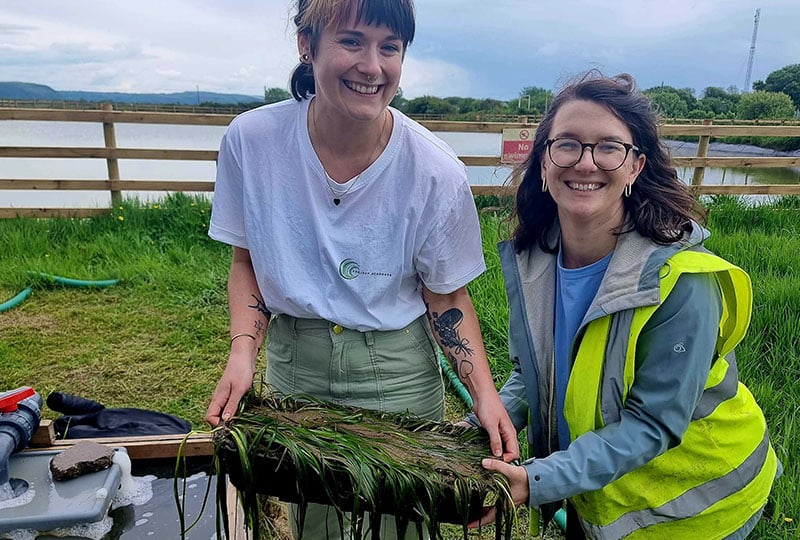
On a learning curve to find optimal growing conditions for different species, Nursery Propagator Carly Green and Anna take a closer look at the batches of seagrass kept outside.
Looking beyond the ocean
Conserving seagrass comes with a complex set of challenges, and while there are threats in the water – like the physical disturbance of coastal development, dredging, and anchoring – we need to look beyond the ocean.
A major concern is pollution from human activities on land – sewage, industrial dumping, and agricultural run-off reduce available oxygen and sunlight to the detriment of seagrass.
“The biggest challenge is water quality. And getting people to understand there are far more pressing issues on land we need to solve in order to tackle seagrass issues.”
– Ben Jones
Coupled with rising sea temperatures and ocean acidification, and a lack of policy specifically addressing seagrass declines, the team’s multi-pronged approach is crucial for its survival.
The path to thriving meadows
We arrived at the Project Seagrass office for a presentation on their ambitious strategy. There we met Dr Leanne Cullen-Unsworth, Dr Benjamin Jones and Dr Richard Unsworth, the three scientists heading the team's vision for a world of thriving, well-managed seagrass meadows.
Alongside turning scientific research into on-the-ground conservation action, Project Seagrass raise awareness through outreach and education programmes to inspire a new generation of seagrass stewards.
Still, their work to protect seagrass in the UK is just one part of the puzzle: the team are collaborating with partners worldwide and engaging with enthusiastic local people to conserve species. For example, supporting local-level seagrass conservation in Thailand, and FORKANI in Indonesia.
"Much of the work I do focuses on building capacity in local communities. That stems from 10 years of research on how seagrass and people are intertwined and interacting. People prefer seagrass over other habitats for fisheries because it's so reliable and efficient – they can always expect a good catch."
– Ben Jones
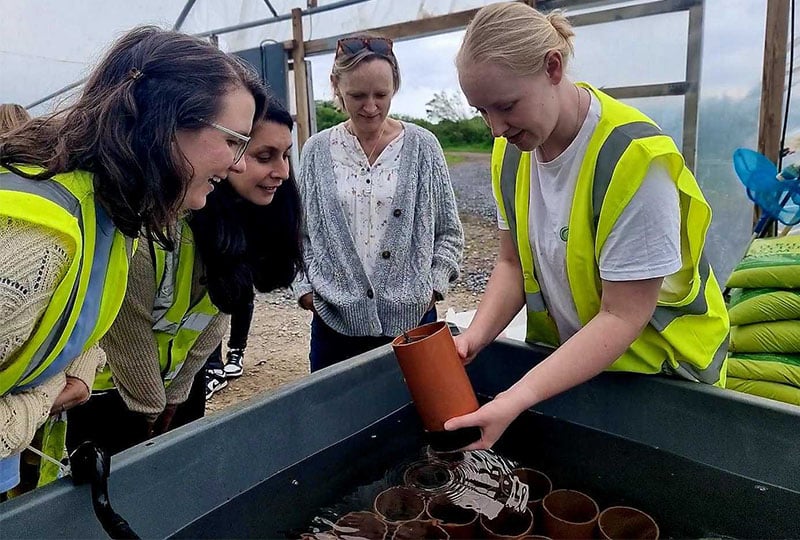
Seagrass Nursery Lead Emily Yates and Chief Executive Officer Leanne Cullen-Unsworth explain their ongoing research into the best ways to cultivate healthy seagrass.
Mapping the status and condition of these ecosystems is critical. That's why the team are encouraging people to use Seagrass Spotter, a global citizen science app that records seagrass meadows coverage – or, where they once were – from Wales to the Western Indo-Pacific.
"By using the app, you can contribute to really cool science. It builds our understanding and creates a fascinating picture of seagrass around the world."
– Ben Jones
The nursery's 'seeds of hope'
As environmentalists will know, amid all the vital research, policy, and fieldwork, conservation success ultimately stems from hope. Luckily, Seagrass Project's nursery is filled with it. Emily Yates, the Seagrass Nursery Lead, gave us a wonderful guided tour into the still-murky world of growing seagrass.
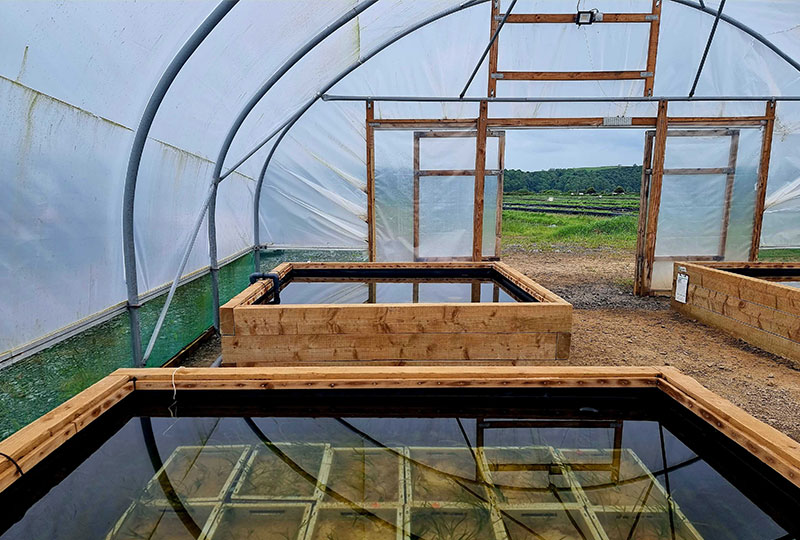
The seagrass nursery, set up as a pilot project in 2020, was the first of its kind in the UK and now houses three different species of seagrass.
The nursery is packed with small artificial ponds testing different conditions to produce plants: how to give them the best chance of germinating and, ultimately, survival. These trials are addressing knowledge gaps, as they share their successes and failures with researchers across the globe.
Seeds are stored in cold, salty water to prevent germination until ready for planting. With these 'seeds of hope', the team are working towards supplying large amounts of seagrass, which can then be transported to restoration projects to get our meadows healthy and thriving once more.

